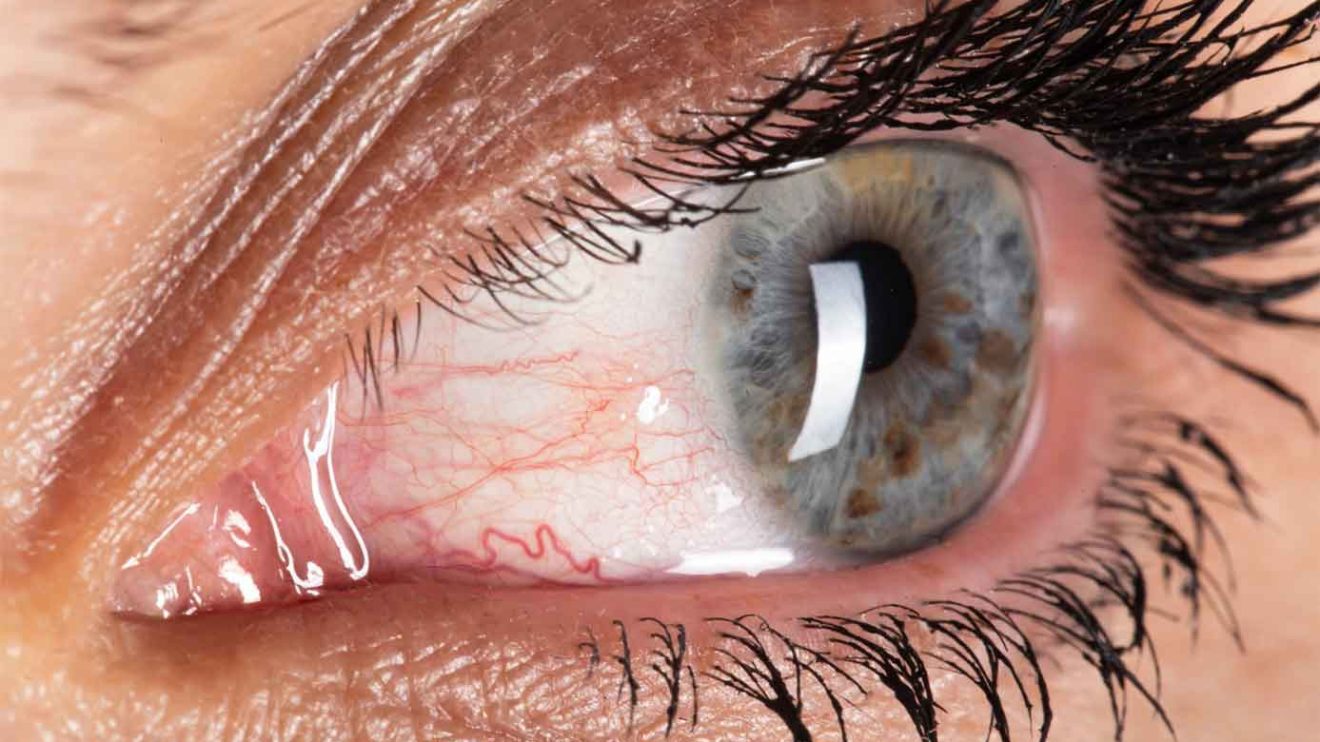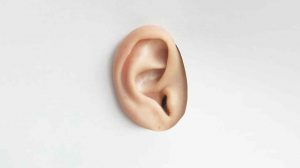Not only the skin and respiratory tract can suffer from allergies, but also the eyes. An eye allergy can cause itching, redness, swelling, and tears. How do you treat this annoying phenomenon and is it possible to prevent it?
Many people think that nasal congestion, skin rashes, and sneezing are the only symptoms of allergies, but the truth is that allergy symptoms can also appear in the eyes.
Is this a common phenomenon?
A high percentage of the population suffers from various allergic symptoms, starting with asthma, through eczema ( asthma of the skin as it is sometimes called), and ending with hay fever.
About 40% of the population in Israel and the United States suffer from eye allergies. Many of them suffer from irritation only during allergy seasons, while others suffer all year round.
What are the causes of allergies?
The allergy symptoms in the eyes, like any allergic phenomenon, are caused by a poor reaction of the immune system. When foreign bodies such as bacteria and viruses endanger the body, the immune system arms itself with proteins called antibodies whose job it is to fight the foreign invaders.
When suffering from an allergy (meaning of the word in Greek: different reaction, abnormal reaction) the body reacts to substances that are not normally harmful and that do not cause any abnormal reaction in people who do not suffer from allergies.
The substances to which the immune system reacts are called allergens. Examples of allergens: house dust mites, plant pollens, hair, dead skin cells of pets, and feathers.
Eye allergy drops of all kinds may also cause an allergic reaction in the eyes due to sensitivity to the active substance and/or the drops’ preservatives.
How does the eye allergy develop?
The allergic reaction causes irritation and inflammation of the conjunctiva, which is a transparent membrane that covers the inside of the eyelids and the white part of the eyes.
In allergic conjunctivitis, the patient feels itching in the eyes and suffers from one or more of the following symptoms: swollen eyes, burning eyes, redness or redness in the eye or under the eye, and tearing. These phenomena are caused by histamine – a substance that is produced and released by mast cells, which are part of the body’s immune system.
What are the possible allergic reactions?
What are the symptoms that indicate an allergy in the eyes?
- Conjunctival redness.
- Itchy feeling in the eyes.
- A tear.
- Swelling of the eyelids.
- Pain, burning, and sensitivity to light.
Most people who suffer from eye allergies also suffer from other allergy symptoms such as sneezing and nasal congestion.
How long after contact with the allergen will the symptoms appear?
The speed at which symptoms appear in the eyes varies from person to person. Some people develop symptoms immediately after contact with the allergen, while others develop them a few days later than the time of exposure.
How can you reduce the risk of suffering from these symptoms?
It is important to try to find the causes of the symptoms and try to avoid them as much as possible. You can be examined by an allergy specialist and undergo an allergen evaluation.
If the problem is, for example:
- Pollen – you can close the windows and stay at home during the seasons when the flowering is at its peak. Another protective measure is to wear sunglasses when going outside. They will inhibit some of the pollens and other allergens and reduce their contact with the eyes.
- Dust – the carpets and curtains should be vacuumed and the bedding should be washed frequently to reduce the amount of dust mites in the house.
- In case of sensitivity to make-up and care materials – stop using cosmetic products that irritate the eyes.
And if I suffer from allergy symptoms – what can be done to relieve them?
- Use lubrication drops (artificial tears) to reduce dryness and wash away the allergens as much as possible.
- Remove contact lenses if the eyes are irritated.
- Avoid rubbing your eyes. No matter how itchy they are – rubbing will only worsen the irritation and may even cause irreversible damage to the eyes.
- In case of exposure to a substance that irritates, the eyes must be washed with running water for about 15 minutes. You can use dedicated hypoallergenic eyelid wipes.
What medications are available to treat eye allergies?
The drug treatment for eye allergy is intended to relieve allergy symptoms, reduce the frequency of allergy attacks and even prevent them altogether.
Eye allergy medications include drops, which must be instilled into the eyes, topical ointments, and tablets. It should be noted that some of the usual treatments given for other types of allergy (such as allergic rhinitis or skin allergy) are also used to treat eye allergies. Below is a breakdown of the main drug treatments that exist.
Eye allergy drops and ointments
The great advantage of eye treatment is that it is a local treatment – which reduces the risk of side effects in the body. There are eye allergy drops that can be purchased without a doctor’s prescription, and there are eye drops and eye ointments that require a prescription from an ophthalmologist.
Eye allergy drops purchased without a prescription are usually given for a short period and relief only. They reduce itching, redness, and swelling and relieve allergy symptoms. Their effectiveness is very limited compared to prescription drops.
Different types of eye allergy drops and eye ointments can be prescribed by a specialist doctor. These differ from each other in their effectiveness, the manner of use, the duration of use, and the type of active substance found in them. Here are the most common drops:
Eye drops containing antihistamines such as Optilast (generic name: Azalestine), Petanol, and Ralstat. These eye drops counteract the action of histamine. As mentioned, histamine is a substance that activates allergy processes in the body. Through local regulation of histamine, these drugs manage to relieve allergy symptoms such as redness, itching, and increased secretion of tears.
The onset of the effect of these eye drops is usually quick, but they must be used for at least two weeks to have an optimal and preventive effect. The most common side effects of these drops are burning or itching sensations that appear immediately after instilling the drops.
Eye drops contain allergy stabilizers (mast cell stabilizers, which are cells in the immune system that have a role in secreting substances that cause allergies). These are, for example, chromoptic drops (generic name: sodium chromoglycate).
These drops are instilled 3 or 4 times a day and can be purchased without a prescription. Their main drawback: they do not provide quick relief. It usually takes about 10 days of treatment before their maximum effect is obtained.
Eye drops containing steroids. These drops are usually given only after giving antihistamine drops did not solve the problem or in cases of chronic (long-lasting) allergy. The use of steroids is for a short time only, preferably no more than a few days.
There are eye drops that contain “weak” steroids such as Lutamax (generic name: Lotenpredanol) and there are eye drops that contain “strong” steroids such as Fred Forte (generic name: prednisolone amateur) and Nef-ML (generic name: fluorometholone).
The recommended treatment is in most cases using a “weak” steroid, because it has fewer side effects.
The side effects of prolonged use of steroids in the eyes include an increase in the risk of cataracts, an increase in intraocular pressure, and glaucoma.
It is recommended not to give steroids to patients diagnosed with glaucoma. The use of such eye drops will only be done under the guidance and supervision of an ophthalmologist and only if you make sure to follow up with him.
Treatment is based on non-steroidal anti-inflammatories. In recent years, Protopic ointment has come into use that suppresses the immune system only where it is applied (local immunosuppression).
The ointment is intended for use on the skin, while its use for the eyes is off-label (that is, the medicine does not yet have an official indication for this use). The ointment is intended for treating the eyes of children and adults but is not included in the medicine basket.
Recently, Protopic can also be obtained in drops. The drops – unlike the ointment – do not cause blurred vision and are also more pleasant to the eye (Protopic ointment may cause a burning sensation during application).
The great advantage of Protocip is its ability to achieve excellent immunosuppression without the dangers associated with topical steroids such as increased intraocular pressure and cataracts).
Drops that constrict blood vessels. Such eye allergy drops – such as Stila, Vi-zolin, and Azolin (generic name: tetrahydrozoline) – can be purchased without a doctor’s prescription. They do reduce redness and itching, but their use is not recommended, as they do not treat the allergy but only alleviate the symptoms.
If you buy such drops at the pharmacy, you should know that it is allowed to use them for only a few days. Prolonged treatment is not recommended as the effectiveness of these drugs decreases the longer they are used.
On top of that, these eye allergy drops can worsen glaucoma and are therefore not suitable for those who suffer from the disease.
Drops to treat dry eyes. Although an allergy in the eyes is sometimes expressed in an increased secretion of tears, most patients suffer from dry eyes, especially women and adults. If you do suffer from dry eyes, you should use protective eye drops and tear substitutes, because the dry eyes may worsen the allergy symptoms. Examples of drops that treat dry eyes: Sistine, Gentil, Hilo-Comod.
How to use eye drops
Be sure to use the eye drops according to the instructions in the consumer leaflet. Before starting to use the drops, wash your hands with soap and water.
If you instill more than one type of eye drop, you must wait 5 minutes between instilling one type and instilling the other type. Even if you instill more than one drop of the same type, you must wait 5 minutes between instilling one drop and instilling the other drop.
The validity of the eye allergy drops
In most eye allergy drops the validity of the preparation is only one month from the moment the vial is opened for the first time. However, there are types of eye allergy drops whose validity can be up to six months from the date of opening for the first time. You should consult the pharmacist regarding the validity of the preparation after opening it or refer to the leaflet of the preparation or the information on the packaging.
Tablets
Tablets containing antihistamines are used to reduce itching and reduce other allergy symptoms in the eyes. These tablets are usually given in cases where the patient has another allergy such as allergic rhinitis or skin allergy. It is not customary to give them in cases where the allergy is only in the eyes.
The start effect of the tablets is not immediate but is felt only after a few days from the start of taking them. Sometimes the use of tablets causes side effects such as dry eyes, so it is not always recommended.
New-generation antihistamines are preparations that are taken once a day and cause fewer side effects compared to old-generation antihistamines. In most cases, these drugs do not cause drowsiness, but a small proportion of patients who take these drugs may still suffer from drowsiness and fatigue. If you suffer from these side effects you must not drive.
Some of the new-generation antihistamines can be bought without a prescription and some – with a prescription. These are drugs such as Zilergy and Histazine (generic name: Cetirizine), AllergyX and Lorestin (generic name: Loratadine), Telfast (generic name: Fexofenadine) and Arios (generic name: Desloratadine). The pharmacist should be consulted regarding preparations that can be purchased without a prescription and regarding preparations that require a prescription from a doctor. It should be noted that in the past it was also common to use antihistamines of the old generation, such as
Ehistone, but their use decreased due to their side effects.
And if the drugs don’t help?
If the medications do not relieve the allergic symptoms, doctors may recommend immunotherapy (allergy immune treatment) or allergy shots. These injections gradually increase the body’s exposure to allergens, and it gets used to them over time.
When should you see a doctor?
If you suffer from an eye allergy, it is recommended to be regularly monitored by an ophthalmologist. You should contact him urgently if you feel pain in your eyes or if there are changes in vision such as blurred vision.
In any case, you should completely avoid rubbing your eyes, as this may cause significant damage to the cornea to the point of blindness.












Add Comment